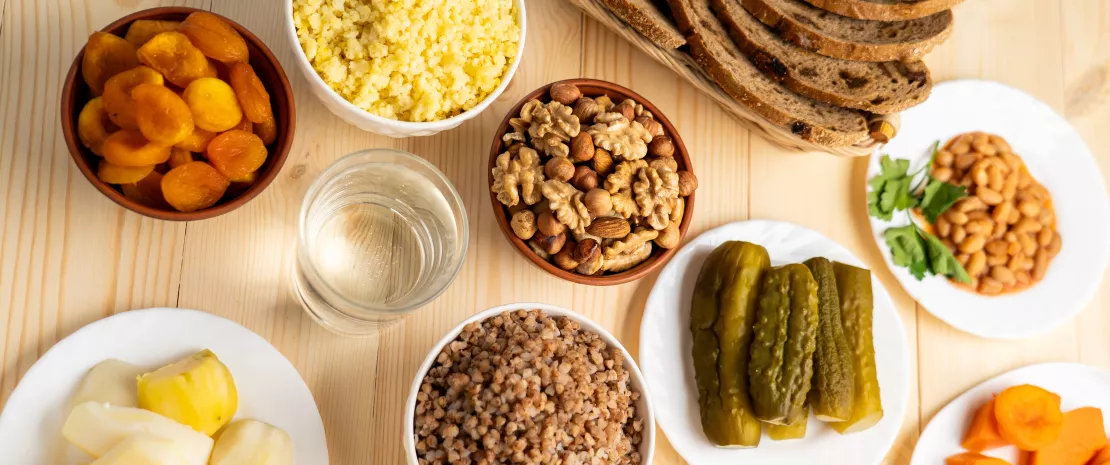Resistant starch: a superfood that reshapes gut microbiota and boosts weight loss!
A study has just shown that resistant starch induces changes in the structure of gut microbiota that are conducive to weight loss and beneficial for health. Supplementation with 40 g/day enabled volunteers to lose more than 6 pounds in 2 months, without dieting!
- Learn all about microbiota
- Microbiota and related conditions
- Act on your microbiota
- Publications
- About the Institute
Healthcare professionals section
Find here your dedicated section
Sources
This article is based on scientific information

About this article
This could be the umpteenth "Spring Special" issue of a women's magazine extolling the virtues of the latest fad diet...But no, these are the results of a particularly rigorous study published in the journal Nature Metabolism 1 that is generating interest and presenting the potential weight-loss benefits of resistant starch. By modulating the structure of our gut microbiota, this dietary fiber—found in legumes, whole grains and green bananas—could well help us shed unwanted pounds and improve our health. Let’s take a closer look at the results.
Zero dieting and several pounds lost
The researchers recruited 22 overweight men and 15 overweight women ( (sidenote: Body Mass Index (BMI) Body Mass Index (BMI) assesses the corpulence of an individual by estimating the body fat mass calculated by a ratio between weight ((kg) and height squared (m2). https://www.nhlbi.nih.gov/health/educational/lose_wt/BMI/bmicalc.htm https://www.euro.who.int/en/health-topics/disease-prevention/nutrition/a-healthy-lifestyle/body-mass-index-bmi ) > 24) with a normal (non-hypocaloric) balanced diet, and supplemented them with either resistant starch or "normal" placebo starch (see box). They measured changes in BMI, gut microbiota and various metabolic parameters.
The results first indicate that taking 40 g of starch daily for 2 months is associated with an average weight loss of 6.17 lbs, with in particular:
- a reduction in visceral fat, the riskiest in terms of cardiovascular risk;
- improved insulin sensitivity and glucose tolerance, factors that protect against diabetes.
None of these effects were observed with the placebo starch.
The Rolls Royce of scientific studies
This study is a "randomized, double-blind, placebo-controlled crossover trial," one of the most rigorous scientific methods in medical research. Participants were randomly divided into two groups:
- In the first, volunteers consumed 40 g/day of resistant starch (before meals) for 8 weeks, then took a break for 4 weeks, and then consumed an equivalent quantity of placebo starch for 8 weeks.
- The second group did the opposite: 8 weeks of placebo starch, 4 weeks’ break, and 8 weeks of resistant starch.
In order to eliminate any human factor that might influence the results, neither the researchers nor the participants knew the type of starch being given.
It's all in the gut microbiota!
Analyses indicate that resistant starch led to a veritable remodeling of the structure of the volunteers' gut microbiota, with an increase in several bacterial strains, particularly Bifidobacterium adolescentis. The researchers' calculations show that the abundance of this bacteria is strongly correlated with the reduction in BMI and visceral fat.
When they transplanted the fecal microbiota of volunteers who had consumed resistant starch into mice (sidenote: Fecal Microbiota Transplantation (FMT) A therapeutic procedure to restore the gut microbiota by transferring fecal bacteria from a healthy donor to a recipient. Explore https://www.science.org/doi/10.1126/scitranslmed.abo2750 ) , the researchers found the same type of effects on weight and insulin sensitivity. And the same effects were obtained by supplementing mice with the beneficial bacteria identified as B. adolescentis.
This reinforces the hypothesis that the changes in the gut microbiota induced by resistant starch are responsible for its beneficial effects.
What is resistant starch?
Starch is the form in which plants (rice, potatoes, wheat, corn, etc.) store carbohydrates. Resistant starch is a part of the starch that is not broken down by our digestive enzymes, and therefore arrives intact in the colon. It is fermented by bacteria in the microbiota, which in turn release various beneficial substances, including short-chain fatty acids
(sidenote:
Short chain fatty acids (SCFA)
Short chain fatty acids (SCFA) are a source of energy (fuel) for an individual’s cells. They interact with the immune system and are involved in communication between the intestine and the brain.
Silva YP, Bernardi A, Frozza RL. The Role of Short-Chain Fatty Acids From Gut Microbiota in Gut-Brain Communication. Front Endocrinol (Lausanne). 2020;11:25.
)
. 2 Oats, rice, sorghum, barley, beans and legumes, as well as green bananas, provide large quantities of fiber and resistant starch. 3
Cooking reduces the resistant starch content of foods, but cooling (e.g. rice or potato salad) helps to restore it. 2
Several metabolic pathways involved
The changes in the gut microbiota, among other things:
- influenced bile acid metabolism: this increased the production of certain so-called "secondary" bile acids capable of acting on cellular receptors involved in glucose and lipid regulation;
- reduced inflammation by restoring the intestinal barrier (low-grade inflammation is known to be involved in obesity and insulin resistance);
- inhibited the absorption of dietary lipids.
These results need to be confirmed by a larger-scale study. But they suggest that increasing the resistant starch content of one's diet is both a simple and powerful strategy for losing weight...or keeping it off after dieting!













